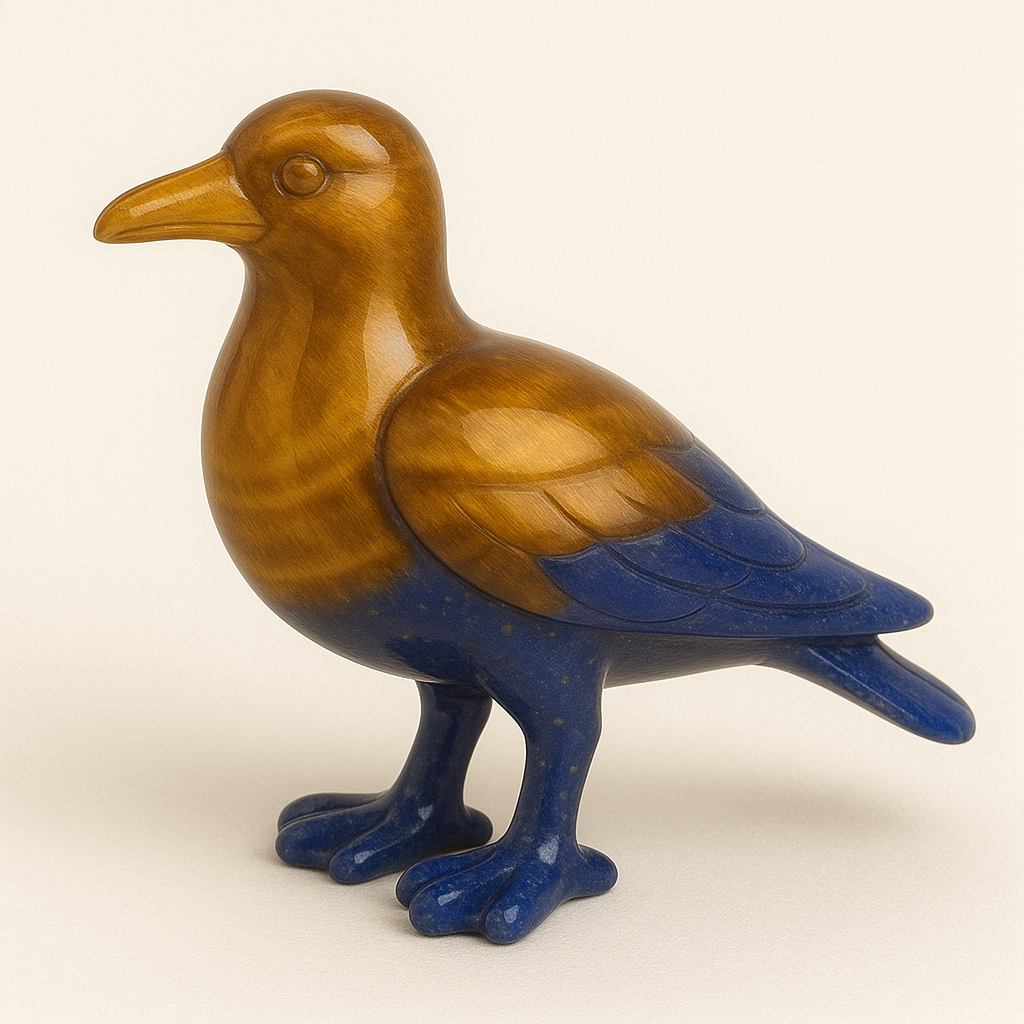
The Symbolism of Seagulls
Share
Hovering between sky and sea, the seagull is a creature of the in-between—at home both in the winds above and the tides below. Its cry cuts through salt air, not as song, but as signal. Opportunistic, observant, and free-roaming, the seagull is an emblem of adaptability, detachment paired with discernment, and the soul’s capacity to navigate shifting environments with clarity and cunning.
To contemplate the seagull is to encounter the archetype of the boundary-walker, of fluid independence, and of the one who learns to survive not by force, but by alert presence in the midst of change.
The Watcher of Shorelines in Cultural Memory
In seafaring cultures, the seagull has long been seen as a guide of the liminal, a presence that appears where land gives way to water, and water dissolves into sky. In Celtic and Nordic symbolism, seabirds like gulls were often thought to be souls of the departed, watching from above, free from burden, yet unwilling to fully part from the world.
In maritime lore, the seagull is both omen and companion—a sign of land near, of weather shifting, or of unseen changes soon to rise. Its presence is seldom ignored; its call is a message from the edge, a reminder that what is taken for granted may soon move.
Yet the seagull is also regarded with irony: thief, scavenger, trickster, it finds sustenance in what is left behind, turning chaos into opportunity. Thus, it becomes a symbol of resourceful survival, and a reminder that sacredness does not always come in solemn form—it may arrive in feathers stained by salt and flight.
Flight, Foraging, and the Wisdom of Detachment
The seagull rarely flocks in rigid formation. It follows no fixed migration, bound not to forest or cliff, but to the interface of elements—where air meets water, and water brushes land. It teaches that presence in change is more useful than resistance to it.
Its diet is not elegant. It takes what is there. It teaches that discernment does not mean perfection—it means perception, the ability to recognize value even in the disregarded. Its scavenging is not desperation—it is a form of clever alignment with what is, rather than yearning for what is not.
When threatened, the seagull lifts into air, rising above disturbance not out of cowardice, but from a natural capacity to rise beyond entanglement. Its body is not heavy, and neither is its energy. It reminds the seeker: some lessons are learned not by digging deeper, but by flying higher.
Resonance with the Energy Centers
The seagull resonates primarily with the yellow-ray energy center—the solar plexus chakra, which governs self-awareness, interaction with groups, intelligent autonomy, and adaptation to social and environmental dynamics.
Its movement through varied terrain—human cities, ocean winds, and natural shorelines—reflects a self that adjusts intelligently to context, claiming space without aggression. The yellow-ray of the seagull is not dominant—it is strategic, independent, and capable of holding sovereignty in flux.
There is also a secondary resonance with the blue-ray energy center—the throat chakra, which governs communication, signal, and the clarity of energetic expression.
The seagull’s voice is not melodic—it is sharp, attention-commanding. Its cry, repeated across the wind, becomes a call to awareness. In this way, the blue-ray is expressed not through poetic speech, but through piercing honesty, the kind that awakens rather than soothes.
Together, yellow and blue move through the seagull as:
adaptation with agency,
expression without embellishment,
and presence that neither clings nor conceals.
The One Who Rides the Wind Without Anchoring
To walk—or fly—with the seagull is to learn that freedom is not escape, but skillful movement, that belonging can be fluid, and that truth may come in sudden calls, not slow sermons. The seagull teaches the seeker to observe from above, to act without attachment, and to trust that lightness may be a form of wisdom.
The seagull does not hoard.
It takes what nourishes.
It does not settle long.
It returns to flight.
It teaches:
Stay alert.
Speak with clarity.
And when the tide shifts, rise.